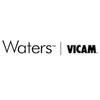Introduction
Animal production faces serious challenges, having to feed a growing population while dealing with increased competition for land, climate change and having to take a more sustainable approach. Sustainable agriculture requires us to meet society’s present needs without compromising the ability for current, or future generations, to meet their needs. The effectiveness by which an animal is capable to transform feed biomass into animal products determines the amount of feed required, as well as the majority of emissions coming from animal production (Windisch et al., 2013; Gerber et al., 2013). It is vital that animals are healthy and fed a diet that meets their requirements, since health problems can lead to a loss of production of up to 30%. Trace minerals such as zinc (Zn) and copper (Cu) are essential to ensure a dairy cow’s health and productivity and play a pivotal role in the route to more sustainable farming practices (Goff et al., 2018; Brugger et al., 2015). Trace minerals are tightly regulated by the animal, as they can have strong toxic effects, with Cu being the best example. At the same time, studies have indicated that even short periods of insufficient supply can lead to significant physiological changes Brugger et al., 2014). Animal requirements of minerals are never static and depend on many different factors, making it difficult to ensure sufficient minerals are fed. On top, minerals tend to react with other feed ingredients, making their availability to the animal uncertain. In commercial practice many minerals are supplemented in diets in amounts many times higher than the quantity retained by the animals, resulting in excessive excretion into the environment. At the same time, some studies indicate that there will be shortage of feedstuff in the future, with inorganic zinc for example being affected in next 20 years. It is therefore important to feed the right mineral source in the right amount to ensure requirements are met, animal health is ensured, and the environmental impact is reduced.
Understanding of the complexity of trace minerals has gradually increased over the last decade as a result of the use of molecular biology techniques and insights in recent years. Especially the latter has enabled visualization of complex mechanisms by which metals are safely transported across cell membranes. Besides the complexity of absorption, trace mineral complexity is further increased by the multiplicity of functions that can be performed by the same element. Zinc for example serves as a cofactor for over 300 enzymes and 2000 transcription factors (Bao and Choct, 2009; Maret, 2019; Suttle, 2010). Trace minerals can be characterized to perform four broad types of functions as related to animal nutrition:
1. Structural: metals such as copper, calcium and zinc can form structural dietary components., e.g. grit is poultry diets.
2. Physiological: metals are present in tissue to control physiological processes such as membrane permeability, acid-base balance and maintenance of osmotic pressure.
3. Catalytic: metals can act as catalysts in enzyme and endocrine systems in both an anabolic as well as a catabolic manner.
4. Regulatory: metals can regulate cell replication and differentiation.
The uptake of trace metals is affected by many factors (Salim et al., 2008; Schlegel et al., 2010; Schlegel et al., 2013). Within the GI tract there is competition for transporters between different metals. Unspecific transporters can be used by all minerals, but even the specific transporters are able to transport several metals, if the concentration is sufficiently high (Lichten and Cousins, 2009; Richards et al., 2010). The concentration of other metals will, therefore, influence the availability of a metal contained within a mineral as well. Trace metals can bind with other dietary components, with phytic acid being one of the most prominent components (Brugger and Windisch, 2017; Brugger and Windisch, 2019). Phytic acid serves as the principle storage for phosphorus in plants and is a six-fold dihydrogen phosphate ester of inositol, also called inositol hexakisphosphate (IP6) (Liang, 2007). Catabolites of phytic acid can also occur, which contain less than six phosphates (IP5, IP4, IP3). Phytic acid dissociates at low pH and re-arranges at a higher pH. During this re-arrangement it has the capability to bind divalent cations, such as Zn and Cu, creating insoluble complexes (Humer et al., 2015). When feed has been ingested, it is first exposed to a low pH in the stomach, leading to dissociation. If a trace mineral is present in a soluble form, the chances of complex formation with phytic acid at elevated pH in the small intestine are high, making the contained metal unavailable for uptake. The complex formation capabilities of cations and phytic acid is (from strong to weak) Cu > Zn > Co > Mn > Fe > Ca and the stability of complexes is (from strong to weak) Zn > Cu > Ni > Co > Mn > Ca. Thus, Zn is a mineral which is affected the most by phytic acid (Yu et al., 2017; Yu et al., 2008; Yu et al., 2010). The chemical form in which a trace mineral is consumed directly affects its bioavailability, with a stable form increasing bioavailability.
Trace mineral sources
Inorganic forms of trace minerals are relatively cheap but suffer from high rates of loss due to dietary antagonism. Metals bound to sulphates for example rapidly go into solution and dissociate, which increases the formation of insoluble complexes, thereby lowering the availability of the metal for uptake at the gut barrier (Bao and Choct, 2009; Brugger and Windisch, 2017). Chelation can be used to create more stable mineral complexes and chelation involves the formation or presence of two or more separate bonds between a ligand and a single central atom (McNaught and Wilkinson, 1997). The word chelation is derived from Greek χηλή, chēlē, meaning claw; the ligands lie around the central atom like the claws of a lobster. Organic trace minerals contain minerals that are linked by chelation to organic ligands (e.g. peptides, amino acids), which provide more stability of the complex in the upper gastrointestinal tract compared to inorganic forms. This minimizes metal losses to antagonists and allows the complex to be delivered to the epithelium of the small intestine for metal transport. These organic trace minerals are formed by a chemical reaction between the ligand and the inorganic trace mineral. There are different organic trace minerals and not all are as potent in increasing their bioavailability. Their efficacy is for a large part dependent on the strength of the bond between the metal and the ligand The stronger the binding strength, the better the availability in the animal (Yu et al., 2010). Another group of trace mineral sources are the hydroxy trace minerals. Hydroxy trace minerals are minerals that possess a covalent bond between a metal and a ligand, leading to a more stable complex, like you would see in organic minerals. The minerals are present in a crystalline structure, which allows the mineral to have low solubility in water and only become soluble under a low pH. Given that this structure of the trace mineral supports less reactivity with other ingredients and essential nutrients in the diet, it ensures a higher relative bioavailability for the animal compared to inorganic trace minerals and a similar availability to organic trace minerals.
Understanding costly reactions in the feed
As a common application in feed, a combination of fat-soluble vitamins and trace minerals in premixes is designed to supplement optimal levels in animals, but the negative interactions between vitamins and minerals are often underestimated. Minerals can promote accelerated oxidation in the premix or complete feed, facilitating the reduced efficacy of essential nutrients which are added to the premix or complete feed like fat, vitamins, microbials, enzymes, etc. (Figure 1). When a soluble mineral source such as sulphates is included in the formulation, moisture can lead to the metal (e.g., copper, zinc or manganese) easily separating from its sulphate ligand, creating a free metal ion of positively charged particles. The loosed metal ions can rapidly attach to and degrade biological material. If a source is used that is less soluble and more stable, it can reduce the potential degradation of feed ingredients, support enzyme stability and probiotic survival and it can improve nutrient delivery quality (Luo et al., 2005). As such, reactivity in the feed is an important metric to take into consideration when considering the most sustainable trace mineral solution in your formulation.
Figure 1: Vitamin E stability in feed
Animal performance with different trace mineral sources
Because IntelliBond minerals suffer less from reactivity, their improved availability for animals means a higher likelihood of meeting the animal’s requirements. The ability to meet an animal’s nutrient requirements under different circumstances enables it to respond properly to stressors, thereby increasing the likelihood of the animal reaching its genetic potential. In some recent animal trials, results showed that the use of hydroxy trace minerals can lead to increases in individual animal performance, but also improve overall uniformity of the herd.
A trial comparing hydroxy copper, manganese, and zinc to sulfate mineral sources demonstrated that hydroxy minerals (IntelliBond™) decreased the expression of serum pro-inflammatory cytokines following an acute (LPS injection) immune challenge (Figure 2). This led to a lower impact on performance, leading to a more uniform herd (Figure 3). This phenomenon is observed in both poultry as well as swine.
Figure 2. Effect of the use of IntelliBond, a unique hydroxy trace mineral, on serum levels of TNF-α in piglets at day 35 post-weaning, 3 hours post-LPS injection and FCR for the entire period. TNF-α is a signalling protein involved in inflammation and immune response. Lower levels may indicate reduced inflammation in the body.
Figure 3. Effect of the inclusion of unique sources of hydroxy trace minerals on herd uniformity at slaughter in grow-finishers fed throughout the entire period in Canada. IBC: IntelliBond C; IBZ: IntelliBond Z; ZnO: zinc oxide
In ruminants, the lower solubility also leads to a lesser effect of minerals on the rumen microbes responsible for fiber digestibility. When minerals are soluble, they have antimicrobial properties and can potentially harm the beneficial fibrolytic bacteria (Figure 4). This lowers the efficiency of rumen fermentation and therefore has an impact on the effectiveness of conversion of biomass into animal protein (Brandao et al., 2021; Boerboom et al., 2023).
Figure 4: Results of in vitro rumen fermentation with sulfate, oxide, hydroxy and an organic proteinate on apparent organic matter disappearance and microbial biomass production. Superscripts indicate significance (P< 0.05).
Trace minerals and the environment
Much is being said concerning the need for livestock producers to adapt to new production norms with the goal of reducing the CO2eq (Carbon footprint) of their livestock operations to comply with industry mandates. As a result of this increased demand, an effort has been extended by Selko (feed additive entity of Nutreco B.V.) to explore the ability of its trace mineral source, Selko IntelliBond to assist with the reduction of the industry’s carbon footprint. A decision was made to pursue an LCA (Life Cycle Assessment) of its three IntelliBond products (zinc, copper and manganese) to determine their base line, total CO2eq value, measured as Mt of CO2eq per Mt of finished product. The LCA was completed and submitted to Dr. E. Kebreab, Professor and Associate Dean for Global Engagement in the College of Agriculture and Environmental Sciences, as well as Director of the World Food Center at U.C. Davis, Ca. for independent review. Dr. Kebreab’s positive review of the IntelliBond products’ LCA now empowers feed manufacturers to more accurately determine the total CO2eq value of their complete feeds and premixes, thereby helping producers meet their sustainability objectives. In addition to the above LCA, Selko commissioned an LCA to determine if a reduction in the amount of CO2eq per Kg of energy corrected milk (ECM) could be achieved via the replacement of a sulfate trace mineral program with IntelliBond trace minerals in dairy cows. The development of the LCA was supported by 5 independently conducted studies demonstrating that when IntelliBond was fed, a corresponding increase in ECM was achieved. Additionally, a meta-analysis of 11 independent studies was included demonstrating the ability of IntelliBond to improve NDFd relative to sulfate trace mineral use (B. Bradford, et.al). Results of the LCA demonstrated the ability of IntelliBond to assist with the reduction of the cow’s carbon footprint by up to 2% per Lt of ECM when used to replace sulfate trace minerals in the ration. The completed LCA was then submitted for independent review (Dr. E. Kebreab) and has thus been verified as the first family of improved trace minerals to offer this important benefit to dairy producers.
Presented at the 2024 Animal Nutrition Conference of Canada. For information on the next edition, click here. 

















